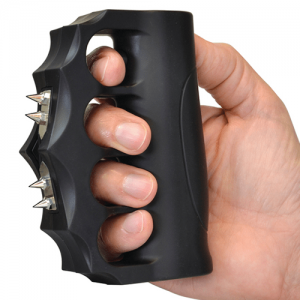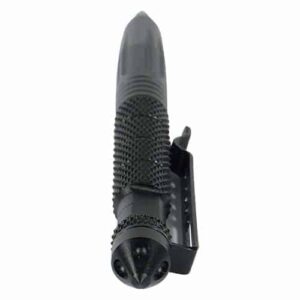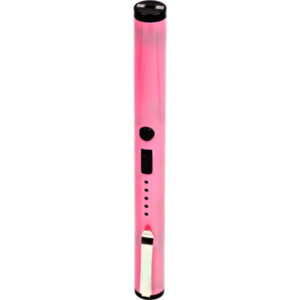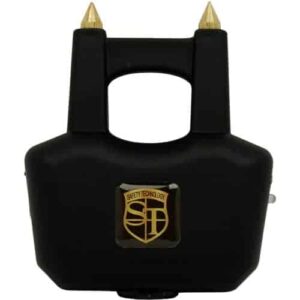Imagine this scenario: You walk into a store, and as you pass by, you notice a security camera positioned on the ceiling, diligently watching over the merchandise. Instantly, you feel a sense of security and trust in the establishment. But what if I told you that the camera wasn’t real? That’s right – it’s just a dummy camera, designed to mimic the appearance of a functioning surveillance system. The question then arises: are these dummy cameras truly effective in deterring criminals and promoting security, or are they merely acting as a facade? In this article, we will explore the world of dummy cameras and delve into the compelling debate surrounding their effectiveness.

Table of Contents
ToggleOverview
Definition of dummy cameras
Dummy cameras, also known as fake or decoy cameras, are non-functioning surveillance cameras designed to resemble real security cameras. They are typically made to look identical to their functional counterparts, complete with a lens, housing, and sometimes even a blinking LED light. However, unlike real security cameras, dummy cameras do not have any internal components or the ability to record or transmit footage.
Purpose of dummy cameras
The primary purpose of using dummy cameras is to create a perception of surveillance and deter potential criminals. By strategically placing these cameras in visible locations, businesses and homeowners aim to discourage criminal activity and protect their properties. Dummy cameras serve as a cost-effective alternative to real security cameras, allowing individuals to enhance their security measures without breaking the bank.
Common types of dummy cameras
There are various types of dummy cameras available in the market, each with its unique design and features. Some common types include dome cameras, bullet cameras, and fake security camera systems. Dome cameras resemble small domes and are often used indoors, while bullet cameras mimic the shape of real bullet cameras typically used outdoors. Fake security camera systems consist of multiple dummy cameras strategically placed to simulate a comprehensive surveillance network.
Effectiveness of Dummy Cameras
Perception of security
One of the key factors that contribute to the effectiveness of dummy cameras is the perception of security they create. Potential intruders are more likely to think twice before targeting a property if they believe they are being monitored by sophisticated surveillance systems. The mere presence of a dummy camera can create a psychological deterrent and make criminals think twice before proceeding with their illicit intentions.
Deterrence factor
Dummy cameras have a strong deterrence factor, as they create uncertainty and raise the perceived risk of detection. Criminals are often opportunistic, seeking out easy targets to minimize their chances of getting caught. When faced with a property equipped with apparent surveillance, they are more inclined to move on to a less guarded location. The possibility of being recorded or identified by a camera, real or not, increases the perceived risks, making criminals think twice about targeting the property.
Cost-effectiveness
One of the significant advantages of using dummy cameras is their cost-effectiveness compared to real security cameras. Installing authentic surveillance systems with recording capabilities can be an expensive investment. In contrast, dummy cameras provide a budget-friendly alternative that can create a similar deterrent effect. While dummy cameras may not capture any footage, their realistic appearance and perceived functionality can offer significant security benefits at a fraction of the cost.
Factors Impacting Effectiveness
Placement and visibility
The effectiveness of dummy cameras heavily relies on their placement and visibility. For maximum impact, it is crucial to strategically position the cameras in areas that are easily noticeable by potential intruders. High-traffic areas, entry points, and vulnerable spots should be prioritized. By ensuring the cameras are prominently visible, their presence becomes apparent, creating a stronger deterrent effect.
Quality of the dummy camera
The authenticity of the dummy camera plays a vital role in its effectiveness. A poorly crafted dummy camera that is clearly fake may not have the desired deterrent effect. High-quality dummy cameras resemble real cameras in terms of appearance, design, and construction. The lens, housing, and overall build should closely mimic that of a genuine security camera. Furthermore, some dummy cameras feature blinking LED lights to add an extra level of realism.
Knowledge of potential intruders
The level of knowledge potential intruders possess about dummy cameras can impact their effectiveness. If criminals are aware that certain cameras are non-functioning or fake, they may be less deterred by their presence. However, many intruders do not have extensive knowledge of security systems and may assume that all cameras are functional. Therefore, the effectiveness of dummy cameras can often depend on the criminal’s understanding or lack thereof regarding the actual functionality of the cameras.
Perception of Security
Psychological impact on potential intruders
The psychological impact of dummy cameras on potential intruders is significant. The perception of being watched and possibly recorded induces a sense of unease and uncertainty. Knowing that their actions could potentially be captured on camera and used as evidence against them increases the perceived risk of getting caught. This psychological pressure deters many intruders and can prevent crimes from being committed.
Creating a sense of surveillance
Dummy cameras contribute to creating an overall sense of surveillance in a given area. By strategically placing multiple cameras throughout a property or an establishment, the illusion of comprehensive coverage is created. This sense of constant surveillance further discourages potential criminals, as they are uncertain which areas are being monitored and which cameras are functional. The perception of a pervasive security system can significantly enhance the deterrent effect.
Factors influencing perceived security
Several factors influence the perceived security created by dummy cameras. The placement and visibility of the cameras play a crucial role in how secure an area appears. If the cameras are positioned strategically and are clearly visible, they enhance the perceived security and suggest the presence of an active monitoring system. Additionally, the authenticity of the dummy cameras and the surrounding environment contribute to the overall perception of security.

Deterrence Factor
Effectiveness in deterring crime
Dummy cameras have demonstrated their effectiveness in deterring crime by creating a strong deterrent effect. Potential intruders are less likely to target a property that appears to be under surveillance, increasing the safety of the premises. The presence of dummy cameras can significantly reduce the occurrence of crimes such as burglaries, vandalism, and theft.
Psychological deterrence
The psychological deterrence created by dummy cameras plays a powerful role in combating crime. Criminals are motivated to minimize their risk and maximize their reward. Knowing there is a possibility of being watched and potentially caught on camera introduces a significant risk factor into their decision-making process. The fear of repercussions, both legal and social, often outweighs the potential gains, leading potential offenders to abandon their criminal intentions.
Offender motivation and risk assessment
Criminals evaluate the potential risk associated with committing a crime before taking any action. Dummy cameras alter the risk-reward calculus for potential offenders, leading to a reassessment of their actions. The fear of surveillance and identification creates a higher perceived risk, making the property less attractive as a target. As a result, potential offenders may opt to seek out targets with less apparent security measures, reducing the likelihood of a crime being committed.
Cost-effectiveness
Comparison with real security cameras
When compared to real security cameras, dummy cameras offer a cost-effective alternative for enhancing security. Authentic security camera systems often require significant upfront costs for equipment, installation, and ongoing maintenance. In contrast, dummy cameras are significantly more affordable, eliminating the need for complex wiring, recording devices, and technical support. This affordability makes dummy cameras accessible to a wider range of individuals and businesses seeking to bolster their security measures.
Initial investment and ongoing costs
The initial investment in dummy cameras is considerably lower than that of real security cameras. With dummy cameras, there are no recurring costs for monitoring services or data storage. Once installed, dummy cameras require little to no maintenance, reducing ongoing expenses. Real security cameras, on the other hand, may require regular maintenance, repairs, and subscription fees for cloud storage or video management software.
Potential cost savings
Utilizing dummy cameras can lead to potential cost savings in various ways. By deterring criminals and preventing crimes from occurring, individuals and businesses can avoid the financial losses associated with theft, property damage, or legal consequences. Additionally, the installation and maintenance costs of dummy cameras are substantially lower than that of real security cameras, allowing for budget allocation to other security measures.
Placement and Visibility
Strategic placement for optimal effectiveness
To maximize the effectiveness of dummy cameras, strategic placement is key. Cameras should be positioned at various entry points, such as doors and windows, as well as in areas that are frequently targeted by criminals. By focusing on high-traffic areas and vulnerable spots, dummy cameras create a strong visual presence and enhance the perception of comprehensive surveillance. Additionally, it is important to regularly reassess camera locations to ensure optimal coverage as property layouts and security needs may change over time.
Standalone versus integrated dummy cameras
Standalone dummy cameras refer to individual units that mimic the appearance of real cameras. These cameras are often mounted on walls or ceilings and work independently. Integrated dummy camera systems, on the other hand, consist of multiple cameras that are strategically placed to simulate a comprehensive surveillance network. The choice between standalone and integrated dummy cameras depends on the size and layout of the property, the level of perceived security desired, and budget considerations.
Ensuring visibility and avoiding obstructions
For dummy cameras to effectively deter potential intruders, their visibility is essential. Cameras should be placed in locations where they are easily noticed, avoiding any obstructions that could block their view. Overgrown foliage or other physical obstructions should be regularly trimmed or removed to maintain optimal visibility. By ensuring unobstructed views of the cameras, their presence becomes more apparent and increases the perceived surveillance.
Quality of Dummy Camera
Realistic appearance and design
The quality of a dummy camera largely depends on its realistic appearance and design. High-quality dummy cameras closely resemble genuine security cameras in terms of size, shape, and materials used. Quality construction ensures that the camera mimics the durability and sturdiness of its functional counterparts. Proper coloration, labeling, and attention to detail further enhance the authenticity, making it difficult for potential intruders to differentiate between real and dummy cameras.
Presence of blinking LED lights
Many dummy cameras feature blinking LED lights to further enhance their realism. The flashing light, often in a red or blue hue, mimics the behavior of functional security cameras and adds an extra layer of authenticity. These blinking lights give the appearance of recording activity, creating an illusion of constant surveillance. Potential intruders, seeing the blinking light, are more likely to believe they are being monitored, increasing the deterrent effect.
Durability and weather resistance
Quality dummy cameras are designed to withstand various weather conditions and maintain their appearance over time. They are typically constructed using durable materials that can resist rain, dust, and UV radiation. The ability to withstand outdoor elements is crucial for dummy cameras used in outdoor settings. By ensuring that the cameras remain intact and operational, property owners can maintain the perceived security and maximize the deterrence factor.
Knowledge of Potential Intruders
Awareness of dummy camera presence
The level of awareness potential intruders possess about the presence of dummy cameras can impact their effectiveness. If criminals recognize the cameras as fake or non-functional, they may be less deterred by their presence. However, many potential intruders do not possess detailed knowledge of individual security systems and may assume that all cameras are operational. Therefore, the effectiveness of dummy cameras often depends on the criminal’s understanding or lack thereof regarding the actual functionality of the cameras.
Criminal knowledge about dummy cameras
While some criminals may be aware of the existence of dummy cameras, the majority do not possess detailed knowledge about specific camera models or brands. Dummy cameras, by design, aim to mimic the appearance of various real security cameras. The similarities between dummy and real cameras make it difficult for potential intruders to differentiate between the two without closer inspection. It is essential to rely on the general lack of knowledge regarding individual security systems to maintain the effectiveness of dummy cameras.
Impact of information dissemination
The impact of information dissemination on the effectiveness of dummy cameras varies depending on the target audience. Generally, the less knowledge potential intruders possess about dummy cameras, the more effective they are at deterring criminal activity. However, it is important not to rely solely on the element of surprise. Regularly updating and replacing dummy cameras can help create doubt even among individuals who are aware of their presence. Keeping potential intruders guessing about the authenticity of a security system is crucial to maximizing its deterrent effect.
Conclusion
Evaluating the overall effectiveness of dummy cameras reveals their value as a cost-effective security measure. By creating a perception of surveillance and exploiting the psychological deterrent effect, these non-functional devices significantly decrease the likelihood of criminal activity. Factors such as strategic placement, realistic appearance, and limited knowledge of potential intruders contribute to the success of dummy cameras in enhancing security.
However, it is important to recognize that dummy cameras are not a standalone solution. They are most effective when used in conjunction with other security measures, such as alarm systems, security lighting, and physical barriers. By supplementing dummy cameras with additional security measures, individuals and businesses can create a multi-layered approach to deter potential intruders and protect their properties effectively.














